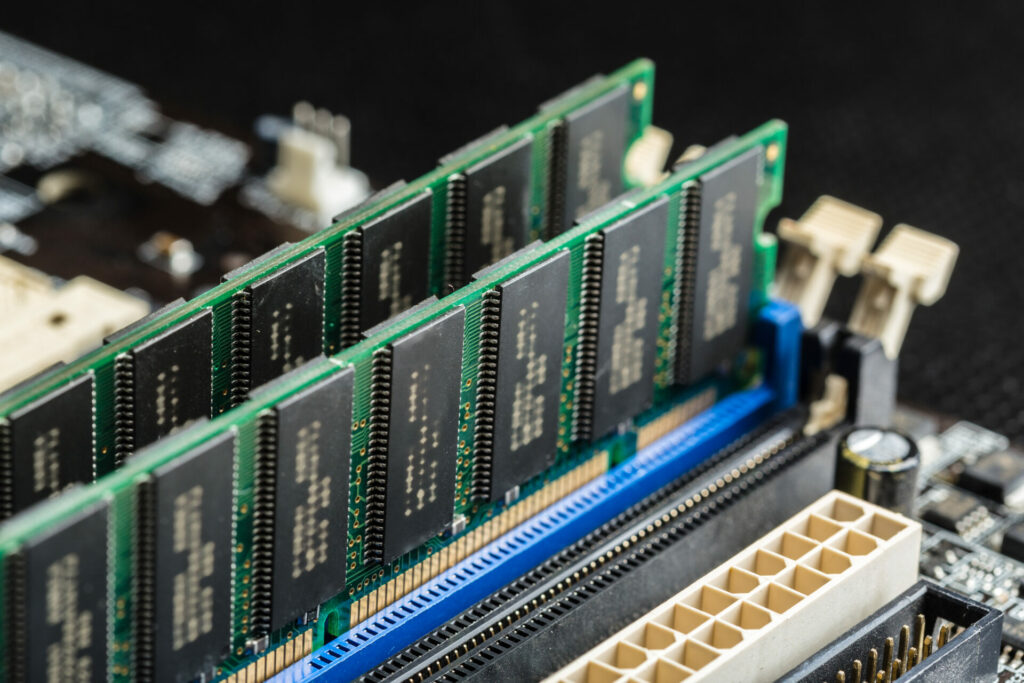For anyone entering the world of industrial memory solutions, the numerous technical terms and memory technologies can be quite overwhelming. As memory products are crucial to businesses that require more advanced solutions than standard commercial memory, it is essential to understand the different memory technologies and their applications to make informed decisions when choosing the right memory solution for your specific needs.
In this beginner’s guide, we aim to unravel the complex world of industrial memory by explaining key terminology and memory technologies, to provide you with a solid foundation of knowledge in industrial memory solutions.
At Nexus, our expertise in memory products encompasses various memory technologies designed for customers who need more than standard commercial memory. By simplifying the vocabulary surrounding these memory products and explaining the underlying technology, we empower you to navigate the complexities of industrial memory solutions with confidence.
By the end of this guide, you will have a clearer understanding of the various memory technologies, their key features, and their practical applications across diverse industries.
The Fundamentals of RAM (Random Access Memory)
Before diving deeper into specific memory technologies, it’s important to understand the core function of RAM in your systems. RAM, or Random Access Memory, is a form of computer memory that allows data to be read and written in any order.
It is vital for the real-time processing of data in your system and is an essential component in almost all electronic devices. There are two primary types of RAM: DRAM (Dynamic Random Access Memory) and SRAM (Static Random Access Memory), which we will discuss in more detail below.
Exploring DRAM and SRAM Technologies
DRAM and SRAM are two key memory technologies, each having its unique features and applications:
1. DRAM (Dynamic Random Access Memory): DRAM is a volatile memory technology, meaning it requires continuous power to retain data. Its advantages include high data transfer rates, low latency, and its capability for large memory densities. DRAM is commonly used in applications that demand high-speed data processing, such as workstations, servers, and high-performance computing.
2. SRAM (Static Random Access Memory): SRAM, also a volatile memory technology, offers faster access times and lower power consumption than DRAM; however, it typically has smaller storage capacities and higher cost per bit. SRAM is suitable for applications where fast data processing and low power usage are crucial, such as cache modules, real-time systems, and high-speed memory buffers.
Understanding NAND and NOR Flash Memory
NAND and NOR Flash are non-volatile memory technologies that retain data even when power is lost. They play a crucial role in the storage and retrieval of data in various industrial applications:
1. NAND Flash: This memory technology provides high-density storage options, fast read speeds, and low power consumption, making it ideal for applications that demand robust data retention and capacious storage. Common uses of NAND Flash include solid-state drives (SSDs), USB drives, and memory cards.
2. NOR Flash: NOR Flash offers fast read and write speeds, combined with reliable data retention capabilities. However, it usually has lower storage capacities and higher costs compared to NAND Flash. Industrial applications of NOR Flash include embedded systems, firmware storage, and BIOS applications.
Emerging Memory Technologies
The memory landscape continuously evolves, with new memory technologies being developed to meet the changing needs of various industries. Some emerging memory technologies include:
1. 3D XPoint: This innovative memory technology combines the benefits of both DRAM and Flash memory, providing high-speed, non-volatile data storage. It can close the performance gap between memory and storage, revolutionising memory hierarchy and enabling faster data access and analytics.
2. MRAM (Magnetoresistive Random Access Memory): MRAM is a non-volatile memory technology that uses magnetic states to store data. It offers high-speed performance and low power consumption, which make it well-suited for applications where both data retention and energy efficiency are of utmost importance.
3. RRAM (Resistive Random Access Memory): RRAM is another emerging non-volatile memory technology, also known as ReRAM or memristor memory. It relies on the change in resistance within a material to store data. RRAM shows significant potential for high-density, low-power, and cost-effective memory solutions.
Identifying the Right Memory Solution for Your Application
With an understanding of these memory technologies, the final step is to assess their suitability for your particular application:
1. Speed and Performance: Consider your system’s required data transfer rates, access times, and bandwidth capabilities to identify the memory technology that best suits your performance needs.
2. Storage Capacities and Density: Evaluate the storage capacities needed to accommodate your application’s data storage and processing requirements to determine which memory technology is appropriate.
3. Operating Environment: It is essential to consider the environmental conditions within your system, such as operating temperature, humidity, and resistance to shock and vibration when selecting the right memory solution.
Final Thoughts
Whether you are a newcomer to industrial memory or a seasoned professional, this beginner’s guide to memory technologies provides essential knowledge to inform your future memory solution decisions. By understanding the key terminology, memory technologies, and their applications, you are better equipped to navigate the complex landscape of industrial memory solutions with ease.
At Nexus, our passion for simplifying secure industrial grade memory terminology is matched by our dedication to providing secure industrial grade memory products specifically designed for customers who need more advanced solutions than standard commercial memory.
Armed with the knowledge from this guide, let us help you make informed decisions about the memory solutions that can propel your business forward, meeting and surpassing your unique requirements in today’s fast-paced and ever-changing digital environment.

